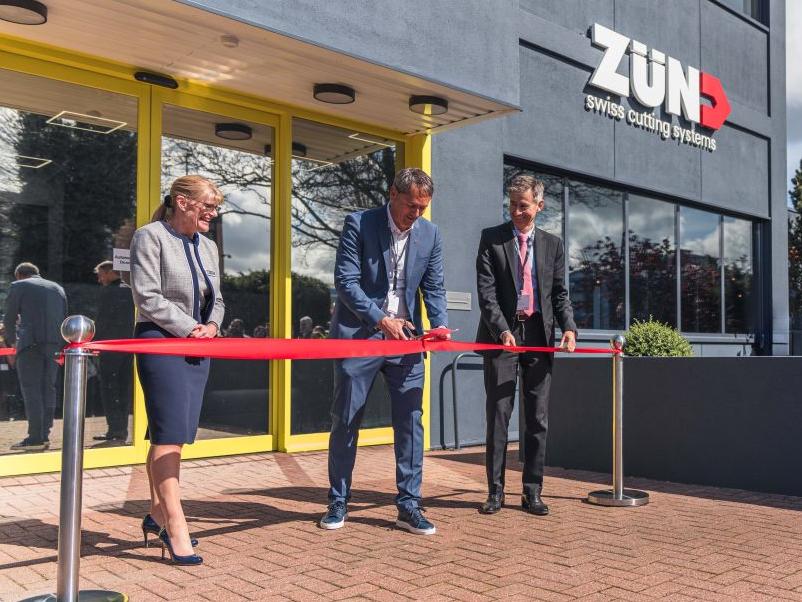Pumps propel performance

Busch Vacuum Pumps and Systems’ head of marketing services, Uli Merkle examines the close relationship the company enjoys with customer and Waging See master boatbuilder, Mader boatyard.
For Leonhard Mader junior and his son Andreas from the Mader boatyard in Waging am See, it’s normal for their customers to regularly make it to the top of the winners’ podium with sailing boats from their own boatyard.
This is because the Waging Olympic, international and national regatta boats are proof of excellent quality and customised fittings for each vessel. When generating the vacuum for resin infusion in the production of GRP parts for the boats, Mader exclusively uses Busch’s R 5 rotary vane vacuum pumps for its sailing boats.
Mader was founded as a joinery by Leonhard Mader senior in 1952, and by 1956 was using vacuum for form-gluing wooden parts to create his first ‘Flying Dutchman’. Mader built his first boat – another Flying Dutchman - from glass fabric and epoxy resin materials in 1962.
The Mader boatyard made its major breakthrough at the 1972 Munich Olympic Games in the Kiel Fjord sailing competitions where the boats for all participants in the Finn Dinghy class were built and supplied by Mader. The 1976 Olympic sailing competitions in Kingston, Canada, caused a major stir when all participants in the Tempest class sailed on Mader boats, with only the British favourites using a different vessel. Out of frustration from only coming in 14th, the two Britons set their boat on fire in the middle of the lake and sank it.
Today, Mader focuses only on building international- and national-class boats, producing around 15 to 20 regatta boats per year on request from sailors around the world. The company caters to its customers’ individual preferences whilst complying with the strict regulations.
All the boats feature a hull and inner shell made of fibreglass-reinforced plastic, and the resins used are predominantly vinyl ester or epoxy resin. Only Busch’s R 5 rotary vane vacuum pumps are used to evacuate the mould in the resin infusion process, as this proved the most successful in day-to-day use. Both Leonhard and Andreas Mader value the reliability of these robust vacuum generators. When, in 2007, the company received the order to build all boats in the Star class for the British Olympic team, Leonhard Mader decided to build these using prepregs.
A new room was built in-house to ensure the temperature required to process and dry out the resin could be maintained. For Mader, it was essential that only a Busch R 5 rotary vane vacuum pump would be used for vacuum generation. After all, for this prestigious contract, the production of all boats would have to subject to reliable and precise parameters and the factors of temperature, time and vacuum level had to be precisely coordinated. Britons, Iain Percy and Andrew Simpson winning the gold medal in the Star class on a Mader boat is the best proof that Mader provided outstanding work.
The seal of approval
R 5 rotary vane vacuum pumps are used in a wide range of industrial applications. In resin infusion processes, it’s not only important that they reach a vacuum level of 0.1 millibars on an ongoing basis, corresponding to a vacuum of 99.99%, but also that sufficiently high pumping speed is still generated with high vacuum performance. After all, even when precisely sealing the synthetic core using foil, a leak may result in the permeation of small quantities of air, which then need to be immediately extracted again using the vacuum pump.
High vacuum performance ensures fast, bubble-free and complete resin infusion. The performance of the R 5 rotary vane vacuum pump can be controlled with a throttle valve, for example if the resin needs to be prevented from flowing too quickly into the mould. This guarantees high quality and means that costs for reworking to repair cavities no longer apply. Their oil-sealed functionality means that R 5 rotary vane vacuum pumps are not sensitive to the gases produced during the drying-out process. These are conveyed through the vacuum pump without being condensed. A resin trap is connected upstream of each of the R 5 vacuum pumps, preventing resin entering the vacuum pumps. Mader reports that there hasn’t been a single fault or any downtime, even though the Busch vacuum pumps have been in operation throughout the drying-out process for decades.
Maintenance is limited to an annual oil change. This is organised over the phone at Mader’s boatyard and undertaken by a Busch service technician. As a result, a safe vacuum supply is also guaranteed at the boatyard for the future, and Leonhard Mader junior and Andreas Mader are sure to build many more sailing boats for future international and national champions.






